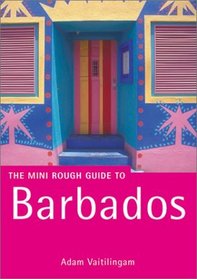Search -
The Rough Guide to Barbados
The Rough Guide to Barbados
Author:
INTRODUCTION Tourists pour into Barbados from all over the world, drawn by the delightful climate, the big blue sea and brilliant-white sandy beaches. Many of them rarely stray far from their hotels and guesthouses, but those who make an effort find a proud island scattered with an impressive range of historic sites and, away from the mostly ge... more »
Author:
INTRODUCTION Tourists pour into Barbados from all over the world, drawn by the delightful climate, the big blue sea and brilliant-white sandy beaches. Many of them rarely stray far from their hotels and guesthouses, but those who make an effort find a proud island scattered with an impressive range of historic sites and, away from the mostly ge... more »
ISBN-13: 9781858287355
ISBN-10: 1858287359
Publication Date: 12/3/2001
Pages: 240
Rating: ?
ISBN-10: 1858287359
Publication Date: 12/3/2001
Pages: 240
Rating: ?
0 stars, based on 0 rating
Genres:




